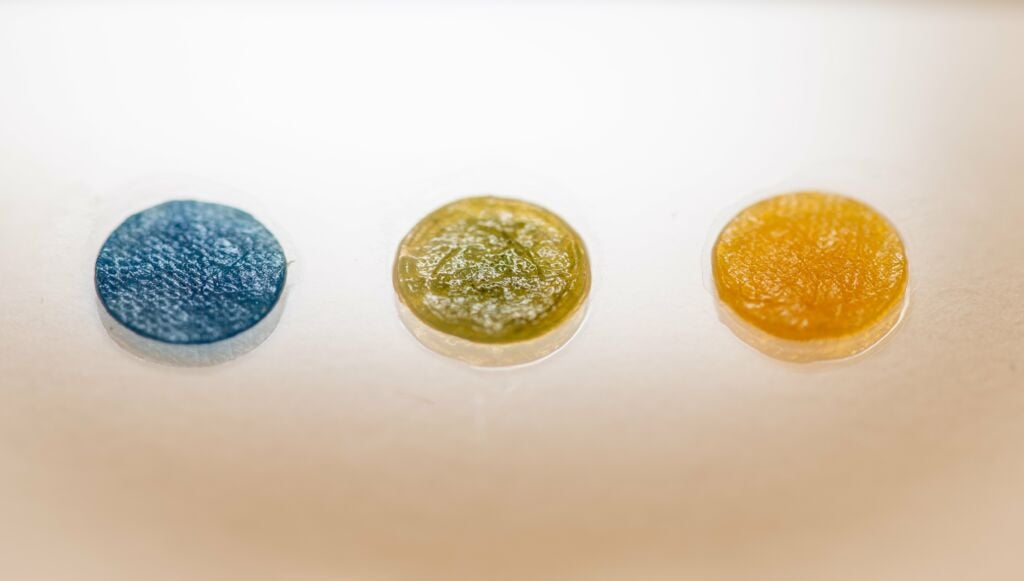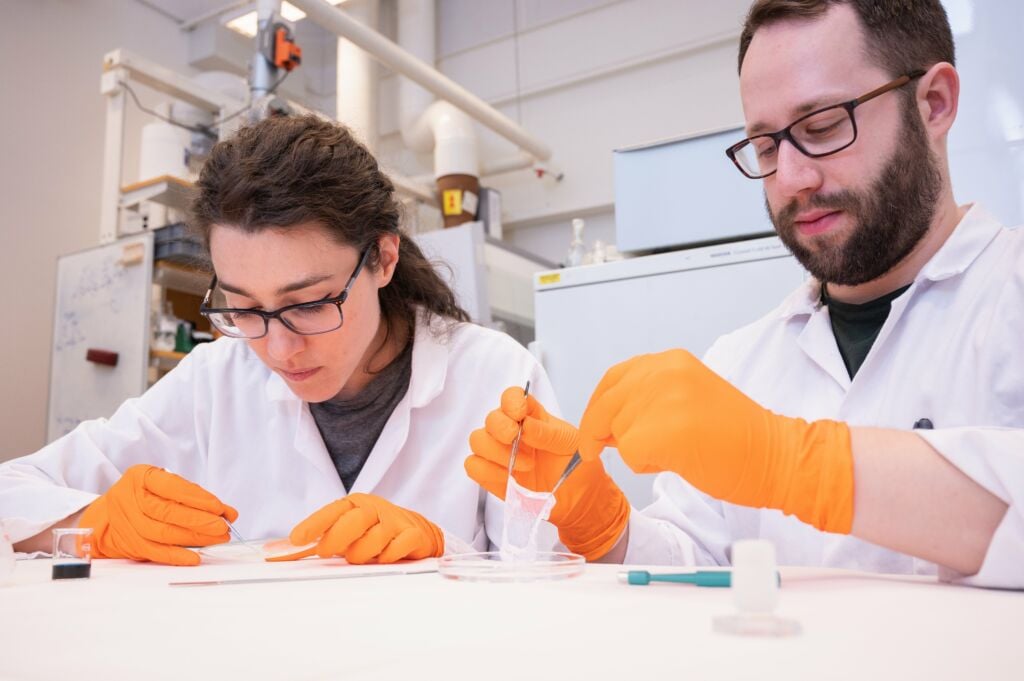Newsletter Signup - Under Article / In Page
"*" indicates required fields
A nanocellulose wound dressing that can reveal early signs of infection without interfering with the healing process has been developed by researchers at Linköping University, Sweden.
The study, published in Materials Today Bio, is another step on the road to a new type of wound care.
The skin is the largest organ of the human body. A wound disrupts the normal function of the skin and can take a long time to heal, be very painful for the patient and may, in a worst case scenario, lead to death if not treated correctly. Also, hard-to-heal wounds pose a great burden on society, representing about half of all costs in out-patient care.
In traditional wound care, dressings are changed regularly, about every two days. To check whether the wound is infected, care staff have to lift the dressing and make an assessment based on appearance and tests. This is a painful procedure that disturbs wound healing as the scab breaks repeatedly. The risk of infection also increases every time the wound is exposed.
Researchers at Linköping University, in collaboration with colleagues from two other Swedish universities, Örebro and Luleå, have developed a wound dressing made of nanocellulose that can reveal early signs of infection without interfering with the healing process.
“Being able to see instantly whether a wound has become infected, without having to lift the dressing, opens up for a new type of wound care that can lead to more efficient care and improve life for patients with hard-to-heal wounds. It can also reduce unnecessary use of antibiotics,” said Daniel Aili, professor in the Division of Biophysics and Bioengineering at Linköping University.
The dressing is made of tight mesh nanocellulose, preventing bacteria and other microbes from getting in. At the same time, the material lets gasses and liquid through, something that is important to wound healing. The idea is that once applied, the dressing will stay on during the entire healing process. Should the wound become infected, the dressing changes color.
Non-infected wounds have a pH value of about 5.5. When an infection occurs, the wound becomes increasingly basic and may have a pH value of 8, or even higher. This is because bacteria in the wound change their surroundings to fit their optimal growth environment. An elevated pH value in the wound can be detected long before any pus, soreness or redness, which are the most common signs of infection.

To make the wound dressing show the elevated pH value, the researchers used bromthymol blue, BTB, a dye that changes color from yellow to blue when the pH value exceeds 7. For BTB to be used in the dressing without being compromised, it was loaded onto a silica material with pores only a few nanometres in size. The silica material could then be combined with the dressing material without compromising the nanocellulose. The result is a wound dressing that turns blue when there is an infection.
Wound infections are often treated with antibiotics that spread throughout the body. But if the infection is detected at an early stage, local treatment of the wound may be sufficient. This is why Aili and his colleagues at Örebro University are also developing anti-microbial substances based on lipopeptides that kill off all types of bacteria.
“The use of antibiotics makes infections increasingly problematic, as multi-resistant bacteria are becoming more common. If we can combine the antimicrobial substance with the dressing, we minimize the risk of infection and reduce the overuse of antibiotics,” Aili said.
He added that the new wound dressing and the antimicrobial substance are part of developing a new type of wound treatment in out-patient care. But as all products to be used in medical care settings have to pass rigorous and expensive testing, he thinks that it will be five to 10 years before it will be available.
Both studies are part of the HEALiX research project financed by the Swedish Foundation for Strategic Research with the objective of developing a new type of wound treatment. Funding was also received from, among others, the Swedish Government Strategic Research Area in Materials Science on Functional Materials (AFM) at Linköping University, Vinnova, the Knut and Alice Wallenberg Foundation and the Swedish Research Council.
Other work on wounds
Because of the cost to healthcare systems, wound treatment has attracted the attention of many biotech and biopharma companies.
In the past year alone, Swedish company Ilya Pharma finalized its global patent coverage for using modified lactic acid bacteria to treat wounds.
Another Swedish company, Omnio AB, a spin off from Umeå University, showed plasminogen is a pro-inflammatory regulator of inflammation that can be used to treat chronic wounds with dysfunctional inflammation. The company said the drug could mean a global treatment revolution for wounds that never heal.
And earlier this year, U.K. company SolasCure saw its maggot enzyme wound treatment move closer to reality.
Partnering 2030: The Biotech Perspective 2023







